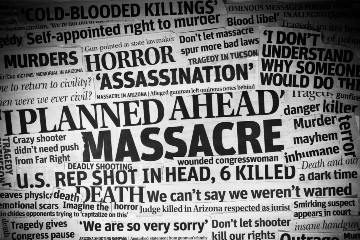Finding the common ground needed to build rapport and break an impasse is a challenge all negotiators confront, none more so than in the topical example of the ongoing firearm reform debate in the US. In this issue of Negotiation Insights we seek not to judge whose values and beliefs have greater legitimacy, but rather to identify ways in which the opposing parties might find the common ground needed to build rapport and get movement where the stakes are high and positions are entrenched.
Since the Sandy Hook Elementary School shooting on December 14, 2012, when Adam Lanza shot first his mother, and then 20 children, 6 faculty staff and himself, the polarisation of views and contest for ideas involving firearm reform has increased.
What we can learn from past firearm reform attempts is that when those wanting reform only refer to the issue as Gun Control, they motivate firearm owners to become defensive and protect their interests. This is because “gun control” sends a message to firearm owners that their constitutional rights, sporting and hunting culture, and ability to protect themselves from a home invasion or other threatening situation could be negatively impacted.
In thinking about what could motivate the many interested parties to have meaningful discussions it is useful to consider the many issues that the vast majority of citizens care about. Examples include public health and safety, constitutional and legislative rights, adherence to the rule of law and the best way to manage firearm technology improvements. Identifying these more obvious areas of common ground in turn makes it easier to shift the present discussions from the single issue of Gun Control to the wider and more value-creating issue of how firearm ownership and use can contribute to improved Public Health and Safety.
Focusing the parties on a subject which they all care about makes it easier to build rapport and to become more informed about why there are differing perspectives, and where there are non-competing preferences, that through joint problem solving could result in mutual gains.
As a further process move, the President could form an eminent persons group, which would reflect the diverse stakeholders and include firearm manufacturers, gun clubs and firearm owners, shooting victims and their families, religious leaders and government (States, Homeland Security, Police and Departments of Health). The eminent persons group would be able to engage and represent their relevant constituents, and through public hearings and private consultations widen perspective taking, define the issues, promote community inclusiveness and manage the process more generally. In addition colleges and universities could create Think Tanks, to further contribute to understanding the issues and creating options.
If those involved were to find consensus on options for improvement, the President could then create a ‘Camp David Accord’ to provide a facilitated forum for stakeholders to then agree on the principles that would give guidance and confidence to governments to make any future policy, budgetary and/or legislative changes.
While commencing national talks does not in itself produce an outcome, it does as a minimum recognise there is an issue of national importance and give the interested parties an opportunity to be empowered by having a leadership role in contributing to the common goal of improved public health and safety.
Self-coaching tips
- Share thoughts and feelings on multiple issues
- Walk in the other party’s shoes and show curiosity by using a greater ratio of questions to statements
- Actively listen, to avoid assessing information that is based on assumptions and through your own prejudices
- Issue an agenda that is mutual and neutral to get engagement

